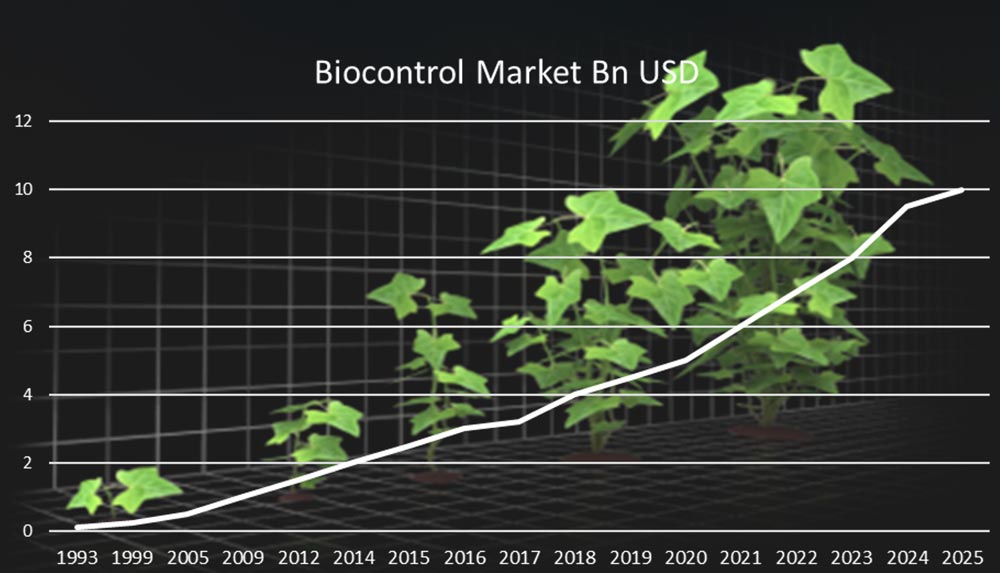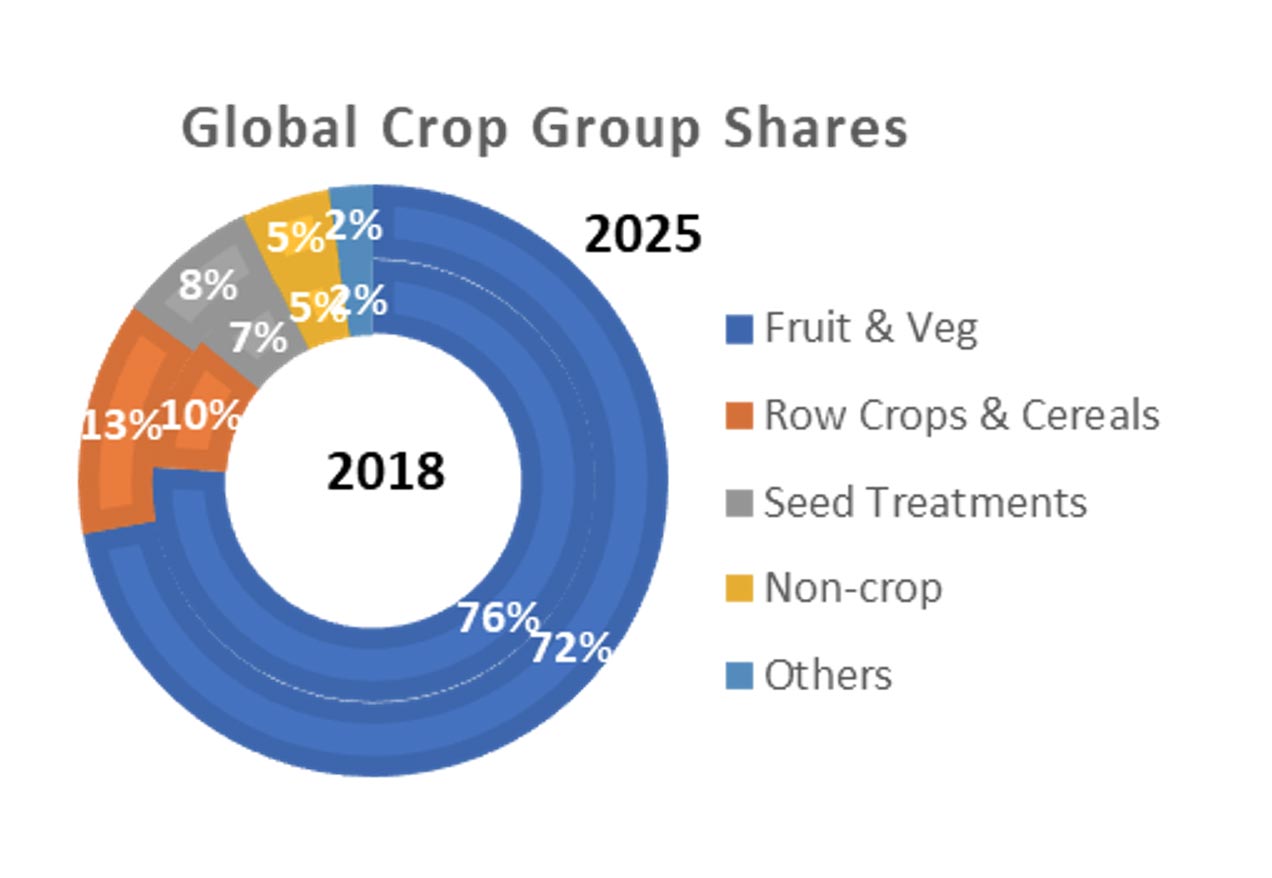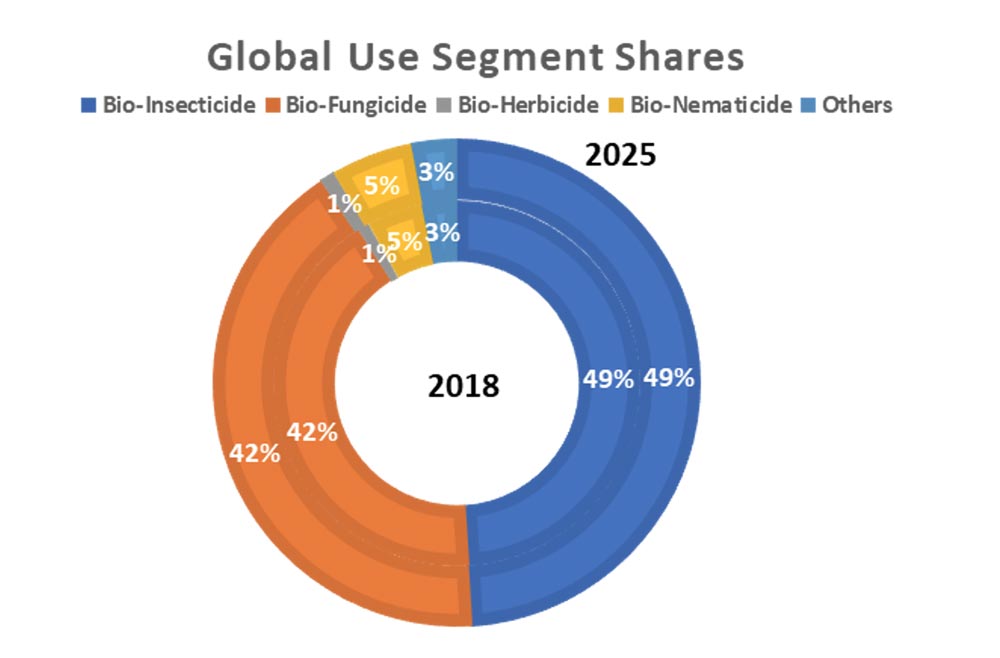The growth of the global biocontrols market began from rather modest size in the 1990s to a multibillion dollar business which is growing at a much faster rate than the conventional crop protection industry. Manufacturers, growers, and consumers all see clear benefits to adopting and using biocontrols, which has fueled this growth.
Source: Dunham Trimmer LLC
Manufacturers value the lower regulatory costs associated with biocontrols due to their inherent safety. They also find that using biocontrols in concert with conventional chemistry benefits both products as pest resistance risk is minimized and pesticide residues on crops are reduced, while the level of performance is maintained or improved. Growers adopt biocontrols to take advantage of the worker safety and flexibility they offer due to their user safety. Particularly in crops that are harvested multiple times, growers find the short re-entry period and preharvest intervals on most biocontrols labels to be extremely beneficial. They also value the effectiveness of biocontrols in helping to prevent pest resistance from developing. While consumers may not specifically seek out crops treated with biocontrols, they are demanding that food, in particular fresh produce, is free from pesticide residues. As result of these demands, many grocery store chains and food marketers are establishing guidelines for growers which require them to seek out alternatives that minimize pesticide residues. Biologicals are utilized to manage plant pests and diseases across a broad and diverse range of situations, including row crops, fruits and vegetables, greenhouses, nurseries, and turf, as well as home and garden uses. They are also valued in public health markets where they are used to control disease vectors such as mosquitoes. Fruit and vegetable uses of biocontrols dominate, but row crop and seed treatment uses are growing rapidly. The high value of seed germplasm has led to greater use of seed treatments including biocontrols to protect the developing seedling. Non-crop uses have also been growing, particularly in response to concerns with mosquito-vectored diseases like the Zika Virus. Microbial biocontrols have been shown over many years to be effective mosquito control options with very high user and environmental safety.
Source: Dunham Trimmer LLC
Biologicals are used to control pests and prevent diseases on crops, with the vast majority falling into bioinsecticide and biofungicide sectors of use. Bionematicides are a small, but rapidly growing sector as a number of new microbial products have been launched recently, providing growers with safer alternatives to harsh conventional chemistry which have typically been used for nematode control.
Source: Dunham Trimmer LLC



